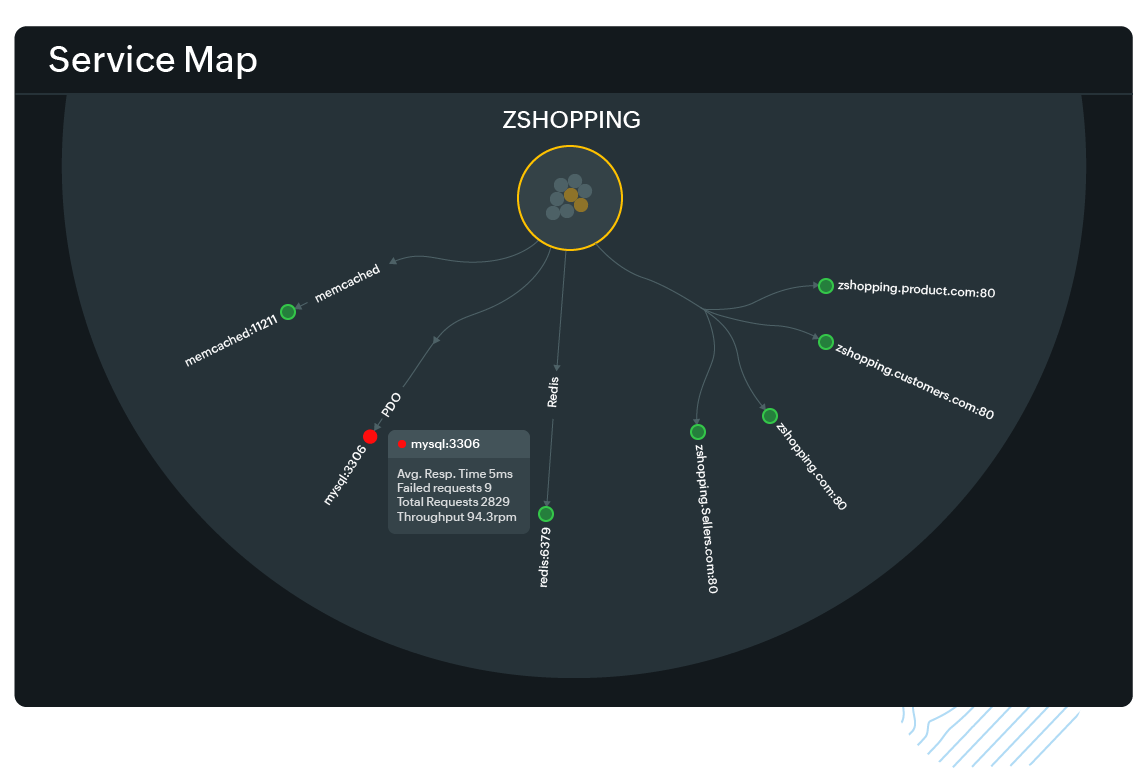
Identify failed components quickly with application dependency mapping

Uncover code-level bottlenecks with end-to-end distributed tracing
Strategic guide to modern APM
The future of application performance lies not in dashboards, but in intelligent, context-aware observability that is essential for managing microservices, cloud-native systems, and global user experiences. This free guide walks you through:
If you want a clearer, smarter, unified way to keep your applications performing at their best, this guide is your blueprint.
Download

Detect anomalies and troubleshoot errors quickly with AI-powered alerts
IIFL's journey to 24/7 application uptime
IIFL, a leading FinTech organization, uses Site24x7 to gain real-time visibility into application health, resolve transaction issues, and optimize uptime for its financial trading platform supporting over 30 million customers.
"We hosted our applications on premises, in private clouds, and in multiple open-source clouds. Because of this multi-cloud presence of applications, we wanted real-time visibility. With Site24x7, we’re able to detect the issues before they happen, and we can give the alert to respective stakeholders at the same time."

Prashant Ahire - VP of information technology, IIFL
Read the full case study
Understand the impact of deployments on customer experience

Effortless OpenTelemetry Integration for Full-Stack Observability
Our customers love Site24x7
Site24x7 vs. Other APM tools
FAQs
1. What application frameworks and languages are supported by Site24x7 APM?
Site24x7 APM supports a wide range of popular programming languages and frameworks, including Java, .NET, PHP, Ruby, Node.js and Python. In addition, SIte24x7 provides OpenTelemetry enabling vendor agnostic observability across a broader ecosystem of frameworks and telemetry data sources.
2. How quickly can I deploy Site24x7 APM, and what’s involved in the setup process?
Most organizations can deploy Site24x7 APM within minutes. The setup involves installing lightweight agents, and accessing your performance dashboard. Step-by-step guides are provided to ensure a smooth onboarding experience.
3. Can Site24x7 APM integrate with my incident management workflows?
Yes, it integrates smoothly with popular tools like Slack, PagerDuty, Jira, Microsoft Teams, and more. Automated alerts and reporting can be linked directly to your incident response and deployment pipelines to ensure rapid, proactive management.
4. What type of reports and analytics does Site24x7 APM provide?
The platform delivers real-time dashboards, customizable reports, and historical analytics covering response times, error rates, resource usage, user satisfaction scores, and transaction traces. You can schedule automated reports or export data for in-depth custom analysis.
5. Does Site24x7 APM require manual configuration to detect anomalies, or is it automated?
Site24x7 APM provides automated anomaly detection powered by AI/ML, enabled by default for key performance attributes. It analyzes historical trends to identify deviations and sends timely alerts to the appropriate teams—no manual setup required.
6. How does Site24x7 APM support scalability as my environment grows?
Site24x7 APM is designed to scale with your applications deployed on different clouds, containers, and cloud-native ecosystems without extra effort. You can monitor hundreds or thousands of instances and microservices from a unified platform.
7. Is customer support available if I encounter issues?
Yes, customers have access to 24/5 technical support(24/7 for premium support) via chat, email, and phone. There is a comprehensive knowledge base, user community, a self-paced learning management system, and direct access to certified Site24x7 engineers for advanced troubleshooting.
8. How can I integrate OpenTelemetry with Site24x7 for full-stack observability?
To integrate OpenTelemetry with Site24x7, use the OpenTelemetry Collector to forward traces, metrics, and logs from your applications in various languages such as Java, .NET, Python, and Node.js to Site24x7’s platform for unified analysis and visualization. Refer to this help doc for more info https://www.site24x7.com/help/apm/opentelemetry.html








